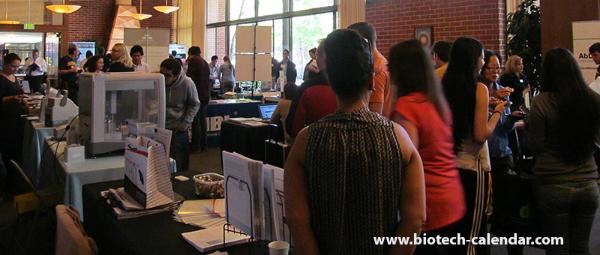Emmanuelle Charpentier, Ph.D., and Jennifer A. Doudna, Ph.D., have been awarded the 2015 Breakthrough Prize in Life Sciences for their work in developing the CRISPR/Cas9 genome editing tool. Dr. Charpentier is the head of the Regulation in Infection Biology department at the Helmholtz-Zentrum für Infektionsforschung (Helmholtz Centre for Infection Research) in Braunschweig, Germany, and also a co-founder and advisor to Swiss drug developer CRISPR Therapeutics.

Dr. Doudna is a Howard Hughes Medical Institute (HHMI) investigator at the University of California, Berkeley. It’s been less than two years since Berkeley biochemist Jennifer Doudna reported in Science a startlingly versatile strategy to precisely target and snip out DNA at multiple sites in the cells of microbes, plants and animals. But since her landmark paper, more than 100 labs have already taken up the new genomic engineering technique to delete, add or suppress genes in fruit flies, mice, zebrafish and other animals widely used to model genetic function in human disease. Jennifer Doudna in her lab. Photo: Roy Kaltschmidt
“Here we have a single protein that can be reprogrammed to work with any RNA sequence to edit selected genes,” Doudna explains. “I think that’s why we’re seeing such an explosion. It’s so accessible, inexpensive and it works very efficiently.”
CRISPR/Cas9 is simpler, quicker, more precise and versatile than current genomic engineering techniques -- a kind of one-stop genomic editing shop.
UC Berkeley ranks first among U.S. universities in the number of highly ranked graduate programs. And with over $730 million in research funding for the fiscal year of 2013/14, the University of California Berkeley continues to make incredible leaps in life science research. Breakthroughs in science are what we at Biotechnology Calendar, Inc. get excited about because we know that we helped play a role in the advancement of that research. We provide trade shows that allow researchers like Dr. Doudna to have access to the latest technology in lab equipment for these life science discoveries. For over 22 years we have been helping bring new products and services to top research universities around the country. In fact, we have a show coming up in June of 2015 at Berkeley and many other top funded research universities in California. If you are looking to present your lab products to top researchers at UC Berkeley please follow the buttons provided. Or, if you are a researcher and would like to preregister for an upcoming event, click below! This link will provide info about our shows around the nation in 2015.
Breakthroughs in science are what we at Biotechnology Calendar, Inc. get excited about because we know that we helped play a role in the advancement of that research. We provide trade shows that allow researchers like Dr. Doudna to have access to the latest technology in lab equipment for these life science discoveries. For over 22 years we have been helping bring new products and services to top research universities around the country. In fact, we have a show coming up in June of 2015 at Berkeley and many other top funded research universities in California. If you are looking to present your lab products to top researchers at UC Berkeley please follow the buttons provided. Or, if you are a researcher and would like to preregister for an upcoming event, click below! This link will provide info about our shows around the nation in 2015.



